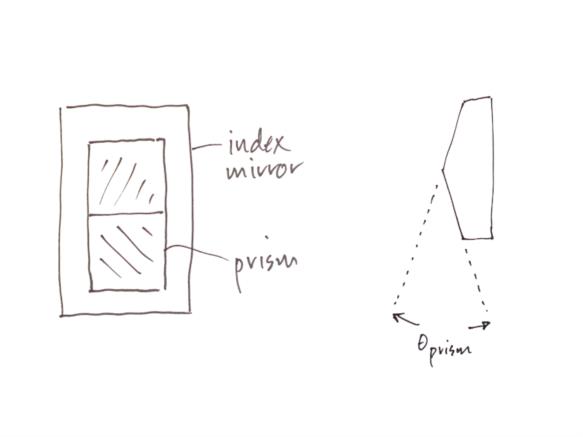
NavList:
A Community Devoted to the Preservation and Practice of Celestial Navigation and Other Methods of Traditional Wayfinding
From: Peter Monta
Date: 2021 Feb 25, 14:26 -0800
What can be done to verify the continued good health of a sextant in the field? Let's put aside star distances and rotary tables, which have been discussed on NavList already. How about a small mirrored prism placed close to the index mirror? See the attached sketch.
The idea would be to use the two "index submirrors" in succession to sight an object. The two sextant readings would be nominally separated by twice the angle of the prism, which we presume has been accurately measured in advance and is stable. (It's something like an optical polygon with only two faces.) Any disparity between the difference of the two readings and the known prism angle is the sextant's delta-arc-error. By rotating the prism in the plane of the sextant, and by using a few different prisms with different angles suitably chosen, the complete arc error can be mapped out.
So the calibration kit consists of two or three prisms and their known angles and a mount to temporarily place them in front of the index mirror (and rigidly connected to the index assembly of course).
This is similar in concept to the Blish prism, since that prism, in conjunction with the index mirror, combines two angles for observation.
Cheers,
Peter
ps: the set of prism angles should be chosen to have some sensitivity to micrometer error--for example, one prism could be half 50 degrees, another half 10.5 degrees, and a third half 2.25 degrees. This way eccentricity or drunken threads on the micrometer can be separated from the smoother large-scale arc error. (Metrology stepping-stones should be "maximally incommensurate".)








